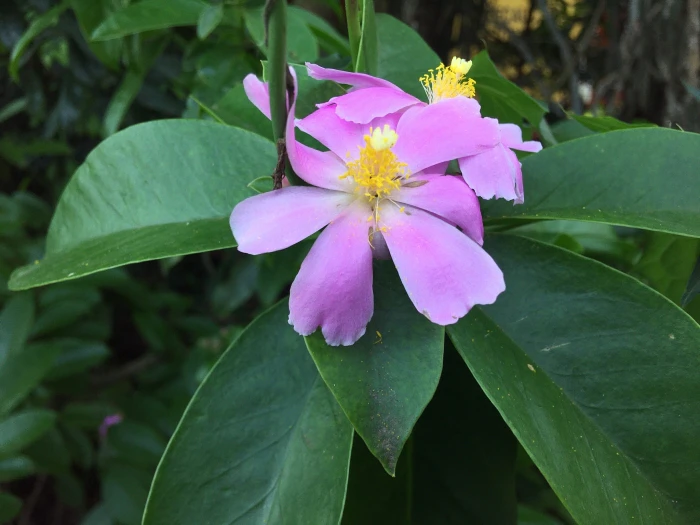Rose Cactus
(Pereskia grandifolia)
Rose Cactus (Pereskia grandifolia)
/
/

© B. Phalan
CC BY 4.0
Image By:
© B. Phalan
Recorded By:
Copyright:
CC BY 4.0
Copyright Notice:
Photo by: © B. Phalan | License Type: CC BY 4.0 | License URL: http://creativecommons.org/licenses/by/4.0/ | Uploader: deboas | Publisher: iNaturalist |

























Estimated Native Range
Climate Requirements for Douglasville, Georgia
| This Plant | Your Site | Plant Suitability for Your Location | ||
|---|---|---|---|---|
| • Precipitation | 17" - 136" | 53" | Aquatic | Aquatic |
| • High Temp. | 69°F - 95°F | 89°F | Your summer temperatures are normal for this plant. | Excellent |
| • Low Temp. | 3°F - 75°F | 31°F | Your winter temperatures are normal for this plant | Excellent |
This plant may not grow well at your location - your precipitation is too high.
Summary
Pereskia grandifolia, commonly known as Rose Cactus, is a perennial shrub or small tree native to the coastal forests of Brazil. It can reach up to 16 feet in height and often has a tree-like form with a woody stem. This species is unique among cacti as it retains broad, fleshy leaves and is not leafless like most other cacti. The Rose Cactus produces showy, rose-like pink flowers that bloom sporadically throughout the year, with a peak in late summer to fall. The flowers are quite ornamental, making it a desirable plant for cultivation.
Rose Cactus is valued for its attractive flowers and unusual leafy appearance for a cactus. It is used in tropical and subtropical gardens as a specimen plant or in mixed borders for its visual interest. In cultivation, it requires well-draining soil, moderate watering, and thrives in full sun to partial shade. While it is relatively low-maintenance, it is susceptible to mealybugs and scale insects. Gardeners should be cautious about its potential invasiveness when grown outside its native range, as it can escape cultivation and outcompete native flora.CC BY-SA 4.0
Rose Cactus is valued for its attractive flowers and unusual leafy appearance for a cactus. It is used in tropical and subtropical gardens as a specimen plant or in mixed borders for its visual interest. In cultivation, it requires well-draining soil, moderate watering, and thrives in full sun to partial shade. While it is relatively low-maintenance, it is susceptible to mealybugs and scale insects. Gardeners should be cautious about its potential invasiveness when grown outside its native range, as it can escape cultivation and outcompete native flora.CC BY-SA 4.0
Plant Description
- Plant Type: Shrub, Tree, Succulent
- Height: 4-20 feet
- Width: 3-10 feet
- Growth Rate: Moderate
- Flower Color: Pink
- Flowering Season: Spring, Summer
- Leaf Retention: Evergreen
Growth Requirements
- Sun: Full Sun
- Water: Low, Medium
- Drainage: Fast, Medium
Common Uses
Bird Garden, Drought Tolerant, Low Maintenance, Potted Plant, Showy Flowers
Natural Habitat
Coastal forests of Brazil
Other Names
Common Names: Rose Cactus, Leaf Cactus, Hortensia Trepadora, Ora Pro Nobis, Quiabento, Sabonete, Wax Rose, Strawberry Cactus
Scientific Names: Pereskia grandifolia, Cactus grandifolius, Cactus grandifolius, Cactus rosa, Opuntia rosea, Peireskia grandifolia, Pereskia bleo, Pereskia grandiflora, Pereskia grandiflora
GBIF Accepted Name: Pereskia grandifolia